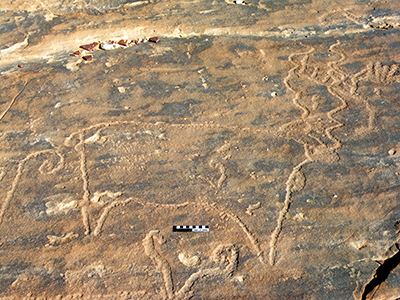The OCIANA database is available online at the following URL:
http://krcfm.orient.ox.ac.uk/fmi/webd/ociana
For further information on how to use this version of the database and how the various sections of the database are structured, please see the following presentation, which was recorded at the University of Oxford's Digital Humanities Summer School (DH@OxSS) at St Anne's College in July 2015:
http://krc.orient.ox.ac.uk/resources/ociana/OCIANA_DHOXSS.mp4
The OCIANA database has been developed using Filemaker Pro, which allows for the rapid deployment and development of complex database systems. Data can be shared with other similar systems, such as DASI and CSAI, via standardised database and web technologies, including SQL and XML, whilst the team in Oxford can tailor the local system to match the requirements of the different groups of inscriptions of ancient North and Central Arabia.
The internal database allows researchers to add new inscriptions easily, upload new images of inscriptions, interrogate the existing dataset and, crucially, to apply tagged information to any of the inscriptions by a simple and easy process. The tagging system has been designed to allow for as much flexibility as possible, to help to create concordances of genealogies and grammatical elements, and to adhere to the emerging tagging standards developed as part of the TEI and Epidoc initiatives.
Phase 3 of the OCIANA Project will allow us to add additional functionality to the database, as well as to add the remaining corpora of North Arabian inscriptions, particularly those belonging to the Thamudic family of scripts.
